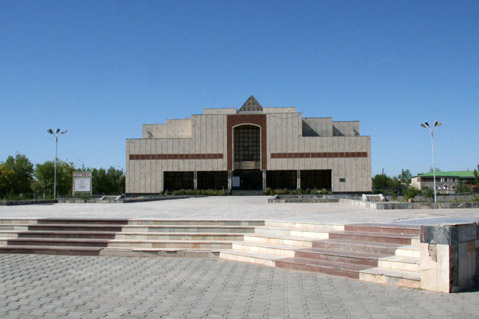Uncovering the Desert of Forbidden Art
SBIFF Documentary About Igor Saviztky’s Campaign to Save Russian Art

As famed for its paintings as it is for its founder, Uzbekistan’s Nukus Museum is home to over 44,000 refugees – not exiled people, but exiled pieces of art. As depicted in the documentary The Desert of Forbidden Art, it took one courageous man — as well as many defiant artists — to not only create the museum, but to do so in the face of danger.
Igor Savitzky was the man in question. Come the onslaught of Soviet power in 1917, Savitzky, realizing that culture was to be relentlessly repressed, took it upon himself — with the financial help of a Communist leader —to salvage thousands of Russian works of art, transporting them from Russia to Uzbekistan, a distant province of the Soviet Union. The film, which chronicles Savitzky’s feat, interweaves Savitzky’s story (told by actor Ben Kingsley) with that of the artists, whose tales are told by the voices of Sally Field, Ed Asner, and Igor Paramonov.
Such truth was especially imperative given the censorship imposed, albeit not entirely successfully, by the Soviets. According to the film, Soviet rule meant repression, meaning that the artists who artistically told the truth — failing to adhere to the Soviets’ suggestions of colorful, smiling, happy artwork — were either executed or sent to mental hospitals and gulags. Of that time, and of their work, artists explain that “art had to explain to people what the Revolution was about” and the “job was to draw what could not be photographed.”
Thus with the opening of the Nukus Museum in 1966 came a safe haven of sorts for the artists, whose works were a hybrid of avant-garde Russian styles and the older Islamic styles of the Uzbeks. As mentioned in the documentary, “Artists were so unhappy in their lives [yet] they found shelter in Nukus.”
Said shelter, of course, would have been nonexistent if it were not for Savitzky, who died in 1984. Upon reflecting on Savitzky’s life — what could easily be described as a legacy — the film features nary a negative word, instead emphasizing Savitzky’s indubitable contribution. Of his gall to approach a government official, one person says, “It was an incredible thing that he created a museum on government money.” Of his dedication to the truth, the film notes that Savitzky “traveled all over Uzbekistan, searching for masterpieces that the history of our times had condemned to obscurity.” Of his appreciation for such artful history, one person says, “He fell in love with each new object he found for the museum.” And of the satisfaction gleaned from his gall, one person reveals, “One might think that he was a very unhappy person, but in reality he experienced such moments of delight that few people are able to experience.”
4•1•1
The Desert of Forbidden Art will be screened one last time on February 12 at the Santa Barbara Museum of Art at 1 p.m.



